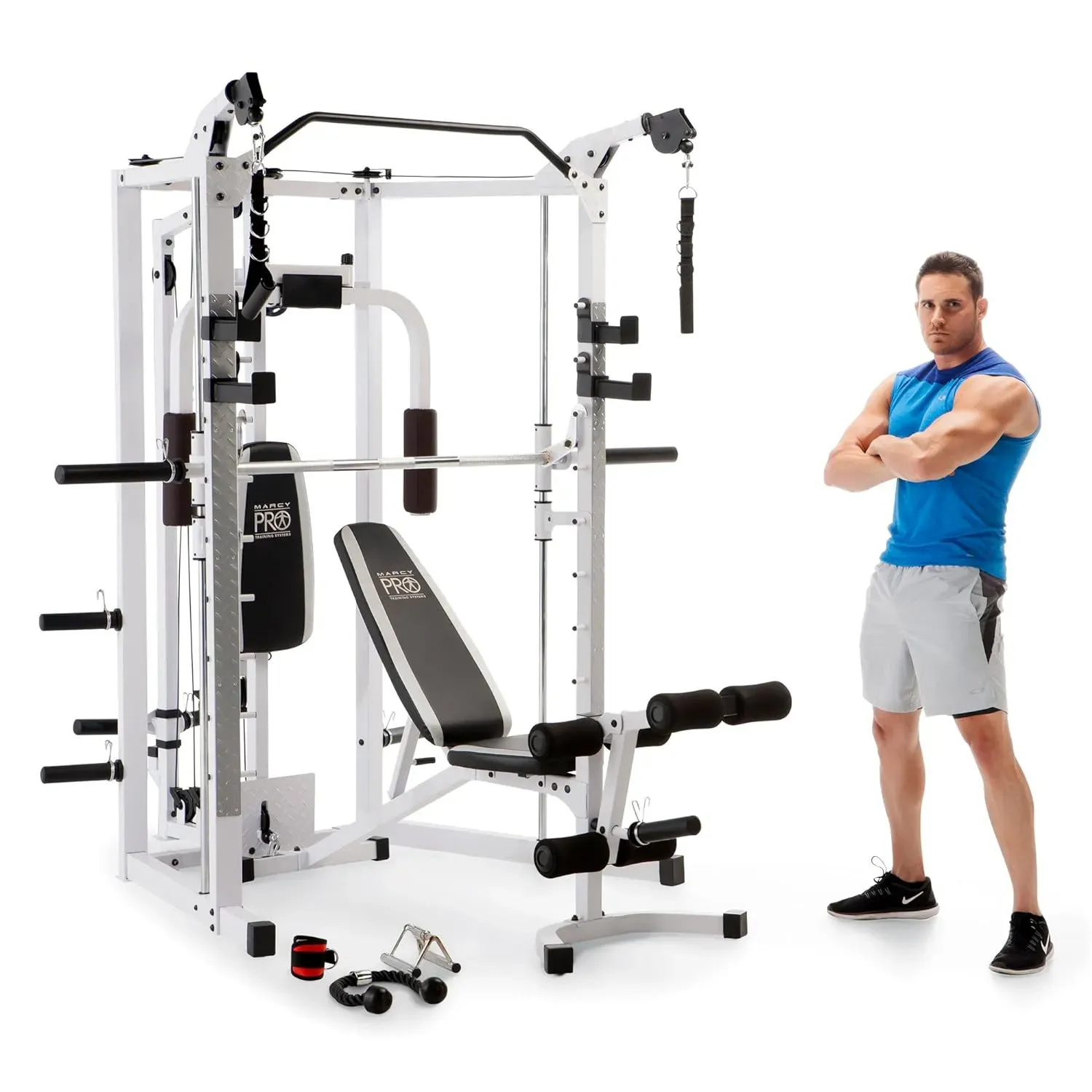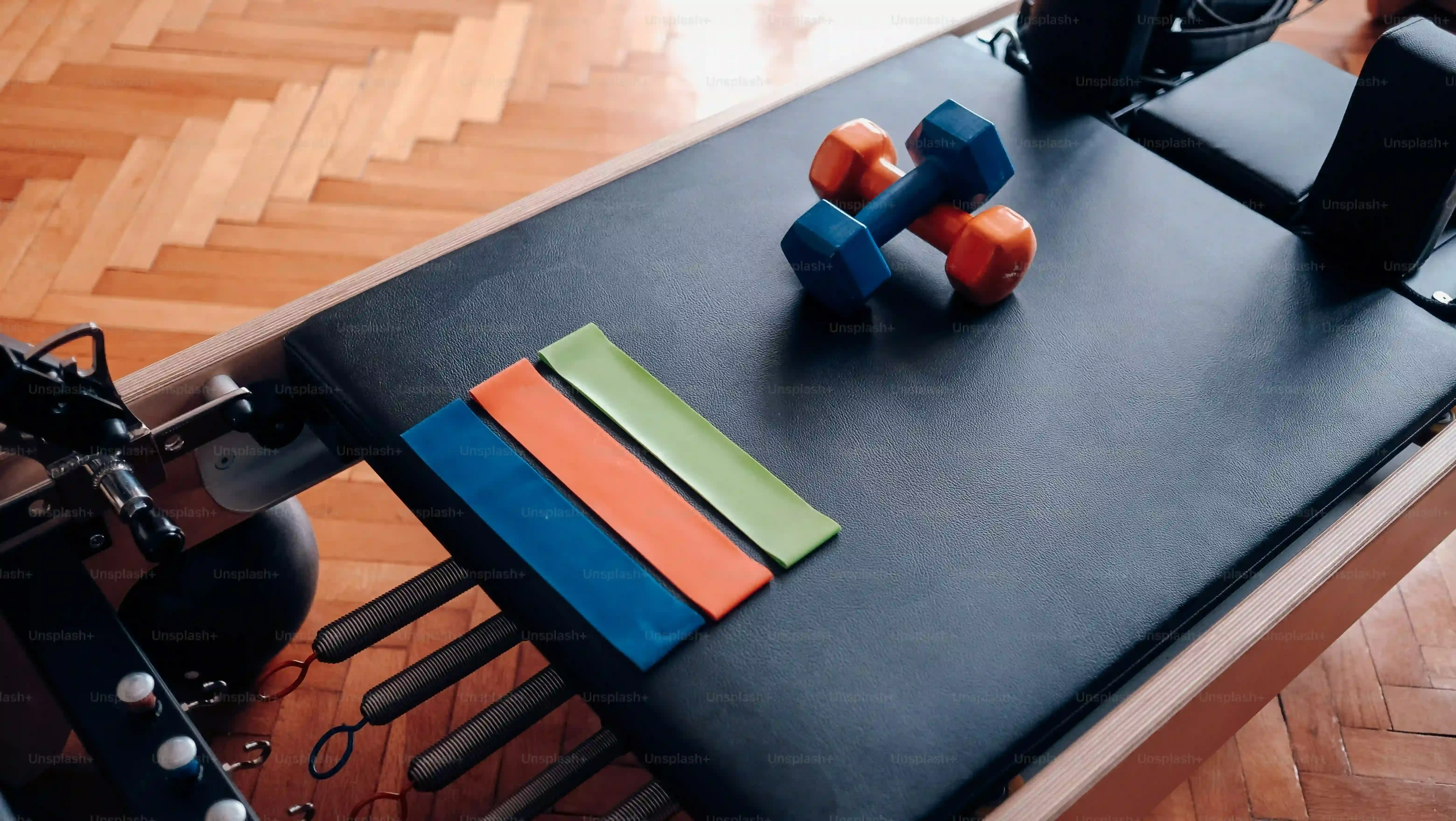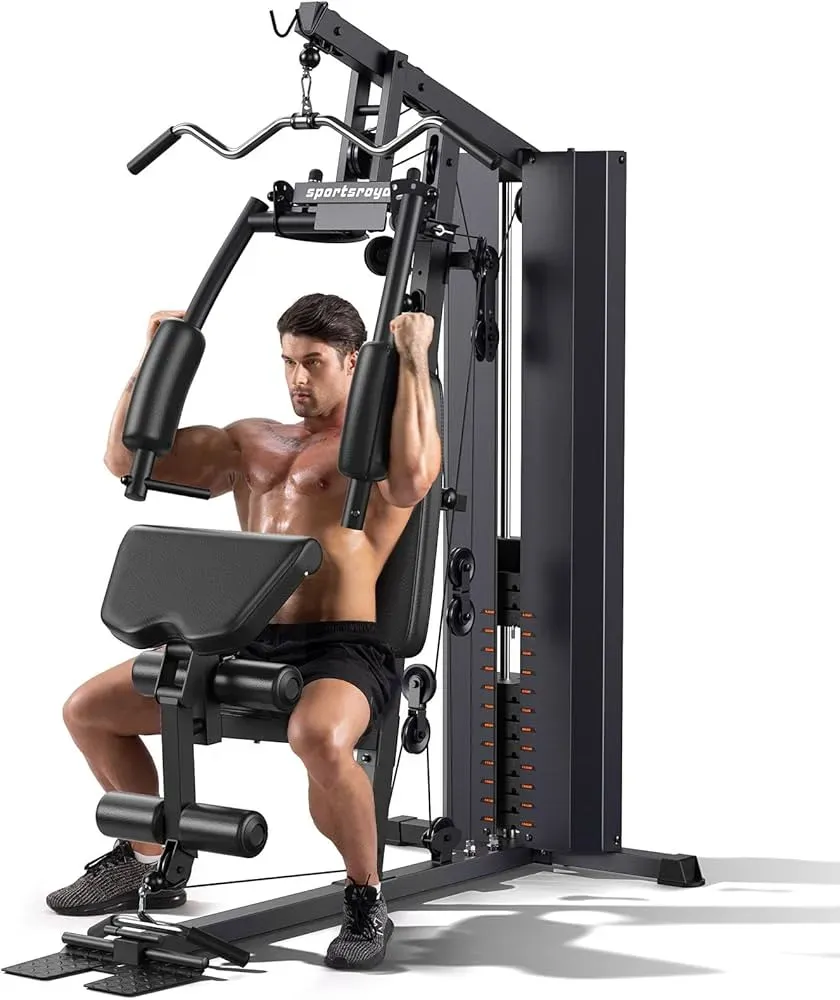Table of Contents
Let's face it, staring at the same set of dumbbells or the same old treadmill day after day can feel less like a path to peak fitness and more like a slow march toward workout boredom. You invested in a home gym for convenience, for privacy, maybe even to save time, but now it just feels...stale. If your home workout routine feels like a chore you're constantly trying to skip, maybe it's time to change the rules.
Tired of Your Home Gym? It's Time for the Home Gym Equipment Game
Tired of Your Home Gym? It's Time for the Home Gym Equipment Game
When Reps Feel Like Punishment
Remember the excitement when you first set up your home gym? The promise of convenience, no waiting for machines, blasting your own questionable workout playlist. Fast forward a few months, and that shiny equipment might feel less like a source of motivation and more like furniture collecting dust. The routine sets in. The same lifts, the same cardio pace, day in, day out. It stops feeling like you're working towards a goal and starts feeling like you're just serving time. You find yourself scrolling through social media for distractions between sets, or worse, finding elaborate excuses not to even walk into that room. Sound familiar? You're not alone. The novelty wears off, and without something to keep the spark alive, that convenient home gym becomes a convenient place to be bored.
Injecting Play into Your Powerhouse
This is precisely why we need to talk about the home gym equipment game. It's not about buying every gadget under the sun; it's about strategically adding elements that challenge you in new ways, track progress visibly, or introduce variability that standard weightlifting or cardio often lacks. Think beyond just lifting heavy or running fast. It's about integrating tools that turn your workout into something you *do* because it's interesting, not just because you *should*. Imagine equipment that gives you instant feedback, sets up dynamic challenges, or even connects you with others virtually or through leaderboards. This shift in perspective, fueled by smart equipment choices, can transform your stagnant workout space into an arena where you actually want to compete – even if it's just against your previous best.
- Signs Your Home Gym is Getting Dull:
- You dread going into the workout space.
- You do the exact same routine every single time.
- Dust bunnies are forming friendships on your equipment.
- You find yourself watching TV more than lifting weights.
- Progress has stalled or reversed.
What Does Playing the Home Gym Equipment Game Actually Look Like?
What Does Playing the Home Gym Equipment Game Actually Look Like?
Beyond Just Lifting and Running
So, you're asking, "What does playing the home gym equipment game actually look like?" It's less about adding blinking lights to your treadmill and more about integrating elements that introduce measurable goals, variability, and a sense of achievement beyond just hitting a certain weight or time. Think about it like this: instead of just doing three sets of ten bicep curls, you might use a piece of equipment that challenges you to maintain a certain power output for a set time, or complete a circuit with dynamic resistance that changes based on your speed. It's about introducing metrics that aren't just weight or time, but things like reactivity, coordination, or even strategic pacing. It shifts the focus from rote repetition to engaging with the movement and the data it provides.
Equipment That Keeps Score (and Keeps You Engaged)
This "game" aspect often relies on equipment that provides real-time feedback and structures workouts in non-traditional ways. Smart bikes that simulate real-world routes or offer competitive races against others online are a prime example. Connected fitness mirrors that guide you through classes and track your form add another layer of interaction. Even simpler tools like reaction lights or agility ladders can turn basic drills into timed challenges. It’s about making your workout interactive, giving you scores to beat (your own or others'), and presenting challenges that require focus and adaptation, not just brute force or endurance. This is the core of the home gym equipment game – using technology and thoughtful design to make fitness feel less like a chore and more like something you actively want to win.
- Examples of the "Game" Approach:
- Using a smart rower with guided programs and virtual races.
- Incorporating reaction training lights into speed or agility drills.
- Following a fitness app that gamifies workouts with levels and rewards.
- Using adjustable dumbbells with integrated tracking for reps and sets.
- Setting up obstacle courses with bodyweight or minimal equipment.
Smart Gear, Real Sweat: Equipment Turning Workouts into Games
Making Every Rep Count (Literally)
so how does this magical transformation from tedious task to engaging challenge actually happen? It starts with gear that does more than just provide resistance or track distance. We're talking about equipment with brains – or at least, a decent operating system. These tools don't just sit there; they interact with you. They measure your performance in ways a standard weight rack or basic treadmill can't. They track power output, reaction time, consistency across sets, even analyze your form. This data isn't just for your ego; it provides tangible metrics to improve upon, turning each workout into a data-driven mission. You're not just lifting; you're competing against your last attempt, aiming for a higher score in force, speed, or perfect execution. It's like your equipment became a coach, a scorekeeper, and a competitor all in one.
Tools That Talk Back (In a Good Way)
Think about the difference between a standard spin bike and a connected fitness bike. One lets you pedal; the other throws you into a virtual peloton, climbs digital mountains, or lets you race friends across town. Smart mirrors offer classes where instructors correct your form in real-time via camera, making you feel like you're in a studio, not your spare bedroom. Even simpler tech, like dynamic resistance trainers or reaction lights, introduces elements of unpredictability and timed challenges that static equipment can't replicate. These aren't just fancy gadgets; they are tools designed to provide instant feedback, structured challenges, and a sense of progression that manual tracking often misses. They turn workouts from a predictable grind into a series of levels to beat.
Equipment Type | How it Gamifies | Example Metric/Challenge |
|---|---|---|
Smart Bike/Rower | Virtual races, scenic routes, structured programs | Wattage output, distance covered in race, completing terrain challenge |
Connected Fitness Mirror | Interactive classes, form feedback, progress tracking | Score based on form adherence, class completion streaks |
Reaction Lights | Speed and agility drills with random targets | Number of lights hit in a time frame, reaction time |
Dynamic Resistance Trainer | Resistance adjusts based on speed/force | Maintaining consistent power, explosive force metric |
The Real Win: Staying Consistent
Ultimately, the goal of integrating this smart gear and playing the home gym equipment game isn't just about collecting cool gadgets. It's about solving the fundamental problem of consistency. When your workout has elements of play, challenge, and tangible, measurable progress beyond just "I lifted the thing," you're more likely to show up tomorrow. The data provides accountability, the challenges keep your brain engaged, and the sense of beating a score—even your own—is a powerful motivator. It transforms your home gym from a place you feel obligated to go into a place you genuinely want to spend time, pushing your limits in new and interesting ways. That consistent engagement, fueled by gear that makes fitness fun, is where the real results happen.
Winning the Home Gym Equipment Game: Choosing What Works
Winning the Home Gym Equipment Game: Choosing What Works
Assess Your Battleground (and Your Goals)
Alright, so you're ready to turn your dusty weights into tools of engagement and start playing the home gym equipment game. First things first: stop looking at shiny ads and take a hard look at your space, your budget, and what you actually want to achieve. Are you trying to boost cardio endurance, build explosive power, improve reaction time for a sport, or just make lifting less mind-numbing? Buying a top-of-the-line smart rower makes zero sense if your main goal is powerlifting. Likewise, a set of reaction lights isn't going to replace your need for heavy dumbbells. Pinpoint your primary fitness objectives. Are you short on space? Live in an apartment with downstairs neighbors who hate noise? These practical constraints dictate what equipment is even on the table. Don't buy a virtual reality running setup if you barely have room for a yoga mat.
Balancing Shiny Tech and Sweat Equity
The market is flooded with "smart" equipment promising to gamify your fitness, but not all tech is created equal, and sometimes, the simplest tools offer the most flexibility for creating your own game. A basic set of kettlebells combined with a timer and some cones can become a high-intensity interval game. A jump rope can be used for double-under challenges. While connected fitness platforms offer guided experiences and competition, consider if you'll actually use the subscription long-term. The flashiest gear isn't always the most effective for *your* specific goals or personality. Do you thrive on competing against others, or are you more motivated by beating your own previous scores? Your answer should guide whether you invest in connected leaderboards or simply a reliable piece of gear with solid performance tracking.
- Considerations When Choosing Gear:
- Your primary fitness goals (strength, cardio, agility, etc.)
- Available space and noise constraints
- Your budget (initial cost and potential subscription fees)
- Do you prefer solo challenges or social/competitive elements?
- How important is real-time data and feedback to you?
Start Small, Play Smart, Win Consistently
You don't need to drop five figures to start playing the home gym equipment game. Often, adding one or two strategic pieces can completely change your routine. Maybe it's a set of adjustable dumbbells with a tracking app, or perhaps some inexpensive reaction lights you can use for warm-ups and conditioning drills. The key is selecting equipment that adds a new dimension to your workouts – something measurable, something challenging, something that breaks the monotony. Think about pieces that offer variety in exercises or introduce a competitive element, however small. Winning the home gym equipment game isn't about owning the most expensive gear; it's about making choices that keep you engaged, motivated, and consistently showing up, turning that potential dust collector into a place where you genuinely enjoy pushing your limits.
Winning Isn't Just About the Weights
So, you've seen how shifting your perspective and perhaps adding a few strategic pieces of gear can transform your home gym from a dusty corner of obligation into a space you actually want to use. The home gym equipment game isn't about owning the most expensive stuff or turning your living room into a CrossFit box. It's about finding ways to make movement engaging, challenging, and sustainable. It's about tricking yourself into consistency by making the process less of a grind and more of, well, a game. Don't overthink it. Start small, try a new piece of equipment, download a fitness app that adds a competitive edge, or just change up your routine with what you have. The goal isn't perfection; it's just showing up consistently. And sometimes, a little bit of play is exactly what you need to keep playing the long game of fitness.